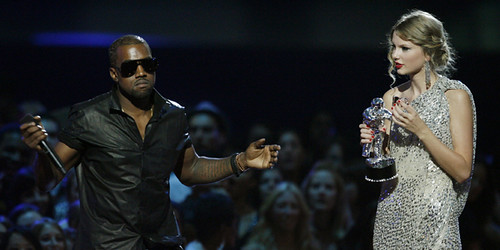A long while ago, my colleague Shanna Farrell told our group about one of her pet peeves, the overuse / misuse of the term “oral history” in the media. She is certainly right about the increased use of the term. A cursory search of the mass-media landscape includes some fun stories in Forbes on the week Wayne Gretzky hosted Saturday Night Live, in Billboard on the time Kanye West rushed the stage at the Video Music Awards, and in vulture.com (New York Magazine) on a scene in Christopher Nolan’s The Dark Knight, in which an actor narrowly avoids having a pencil pierce his eyeball.

As I was looking at these pieces, it occurred to me that what journalists mean by “oral history” is simply a more extensive use of quotations and a lighter touch with the narrative. But it’s still, of course, journalism. These are “thick descriptions” of a moment in time, not the life histories oral historians usually do.
We in the profession of oral history, however, are at a bit of a messaging disadvantage. After all, mainstream journalism, even in the age of social media, is the ultimate mainline to the public. In fact, journalists still for the most part shape and define what we call “the public.”But do all of these examples constitute a misuse of the term “oral history?” The piece on The Dark Knight, for example, is nothing more than a series of quotations from people interviewed for the article. How different are these from the secondary outputs developed within the field of oral history, such as the Oral History Center’s own podcasts?
There is a real appetite for what oral historians do, and it’s growing. Part of me welcomes this misuse of so-called oral history, as long as we have the opportunity to correct misconceptions about our nuts-and-bolts work, i.e., the co-creation of more in-depth life histories, and to highlight the core fact of our privileging the voice and authority of the narrator over our own.
With our hectic, multitasking lives, punctuated by the forced downtime of gridlocked traffic and monotonous subway rides, we’re living in a strange second Golden Age of Radio. Archival oral history projects have a great shot at reaching these audiences of bored commuters, pensive gardeners, and late-night snugglers if we can broaden our notion of how to package and curate the wonderful materials we’ve helped to make with our narrators.